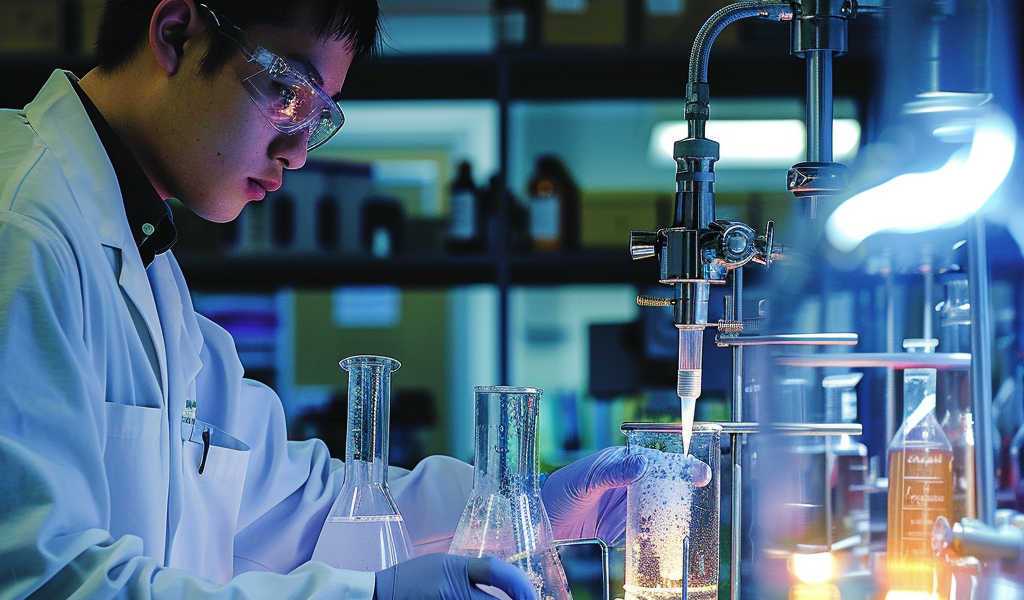In a groundbreaking study, engineers from Rice University have unveiled an innovative reactor system capable of converting nitrates into ammonia, presenting a potential solution to the dual challenges of water pollution and ammonia production. This development marks a significant advancement in the quest for greener methods in both areas.
Ammonia is a crucial chemical widely utilized in fertilizers and various industrial applications, playing an essential role in global food production. However, the conventional methods of ammonia synthesis contribute significantly to environmental concerns, accounting for approximately 2% of global energy consumption and 1.4% of carbon dioxide emissions. The new reactor design from Rice University aims to address these issues by decarbonizing ammonia production while simultaneously tackling nitrate pollution in water sources.
The global demand for ammonia exceeds 180 million tons annually, primarily produced through the Haber-Bosch process. This traditional method requires high temperatures and pressures to facilitate the reaction between hydrogen and nitrogen, relying on large-scale infrastructure. An alternative approach, electrochemical synthesis, offers a more sustainable pathway by utilizing electricity to drive the necessary chemical reactions.
Feng-Yang Chen, a graduate student at Rice and the lead author of the study, highlighted the advantages of electrochemistry: “Electrochemistry can occur at room temperature, is more amenable to scalable formats for different infrastructure systems, and has the capacity to be powered by decentralized renewable energy.” However, previous attempts to implement this technology have been hindered by the requirement of large quantities of additive chemicals during the electrochemical conversion process.
The engineers at Rice University addressed this challenge by developing a reactor that employs recyclable ions and a three-chamber system, significantly enhancing the efficiency of the reaction. A key innovation of this reactor is its use of a porous solid electrolyte, which eliminates the necessity for high concentrations of supporting electrolytes, a limitation that has plagued earlier efforts to sustainably convert nitrates into ammonia.
In practical application, the reactor was tested with nitrate-contaminated water, demonstrating its ability to produce pure ammonia while simultaneously purifying the water. Chen elaborated on the experimental results, stating, “We conducted experiments where we flowed nitrate-contaminated water through this reactor and measured the amount of ammonia produced and the purity of the treated water.”
The implications of this research extend beyond ammonia production; the ability to treat nitrate-laden water could have significant environmental benefits. Nitrate pollution is a pressing issue that affects water quality and poses health risks to both humans and ecosystems. By converting harmful nitrates into useful ammonia, this innovative reactor could help mitigate the environmental impacts associated with traditional ammonia production methods.
Moreover, the potential for utilizing renewable energy sources to power the conversion process could lead to a carbon-neutral approach to ammonia production. This aligns with global efforts to reduce carbon emissions and combat climate change, making the Rice University reactor a promising development in sustainable technology.
The research findings have been documented in a recent publication, contributing valuable insights into the field of water treatment and chemical production. As the world grapples with increasing demands for food and clean water, this innovative reactor system represents a significant step forward in addressing these critical challenges through sustainable practices.
As the technology progresses, further studies and real-world applications will be essential to fully understand the reactor’s capabilities and its potential impact on both water quality and ammonia production. The ongoing research at Rice University highlights the importance of interdisciplinary collaboration in tackling some of the most pressing environmental issues of our time.





